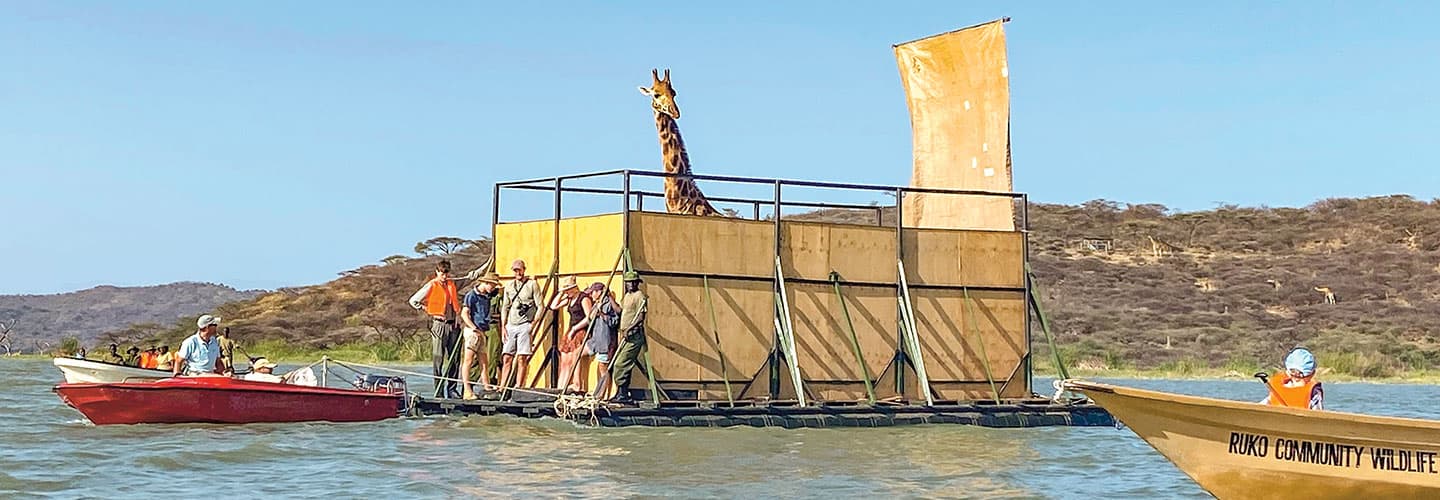How do you get the world’s tallest animal off an island? That’s the problem conservationists in the African nation of Kenya have faced since last fall. Months of heavy rain had left nine giraffes stranded on an island in Lake Baringo. Swimming to safety wasn’t an option. The lake is too wide for the giraffes to swim across, and hungry crocodiles lurk in its waters.
Wildlife experts and members of the local community came up with a plan to safely get the towering creatures off the island. The team would float the giraffes across the lake on a raft. This type of rescue mission had never been tried before.
“I don’t think I’ve ever heard of this happening,” says David O’Connor of Save Giraffes Now. The organization has helped lead the rescue efforts.
How do you get the world’s tallest animal off an island? That’s the problem conservationists in the African nation of Kenya have faced since last fall. Months of heavy rain had left nine giraffes stuck on an island in Lake Baringo. Swimming to safety wasn’t an option. The lake is too wide for the giraffes to swim across. Hungry crocodiles lurk in its waters.
Wildlife experts and members of the local community came up with a plan. Their goal was to safely get the towering creatures off the island. The team would float the giraffes across the lake on a raft. This type of rescue mission had never been tried before.
“I don’t think I’ve ever heard of this happening,” says David O’Connor of Save Giraffes Now. The organization has helped lead the rescue efforts.

